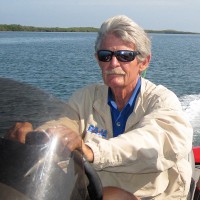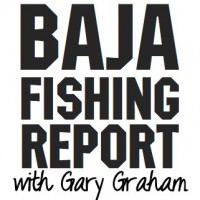
Just below the San Diego/Tijuana border, the Coronado Islands are being treated as though they were an evil stepsister as most of the fleet ventures farther offshore to 371/425 south to the Upper Hidden Bank… weather permitting.
Currently, a lot of the yellowfin are football-sized, but there are still some of those larger ones up to 40 pounds. Most of the skipjack are larger than the smaller yellowfin.
Trolling is producing mostly skipjack, and while yellowfin can often move in after a short time, the number of skipjack is overwhelming the yellowfin.
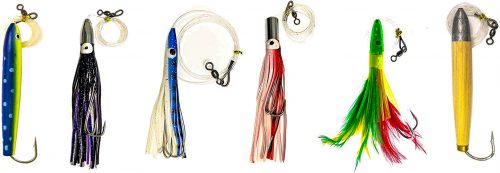
Small feathers and jet heads are working just fine. The yellowfin will eat cedar plugs and spreader bars or daisy chains. Use a different color for your stinger to make it stand out. Black/purple with a pink stinger is a consistent producer.
You could find that fishing with chunk bait or whole dead sardine might be a better bet to get a yellowfin out from the skippies as the skipjack much prefer live bait.
Light line (15- to 20-pounds), and small hooks size #4 and #2 with either live, dead or chunk sardine continues to work best for fishing bait.
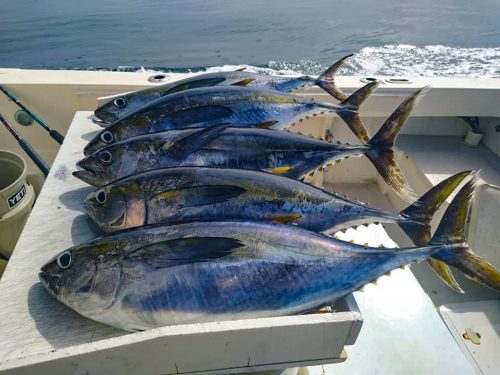
The Ensenada fleet is enjoying both surface fishing inshore (yellowtail, barracuda, bonito), and offshore (bluefin tuna near the banks), as well as excellent bottom fishing with limits being the norm.
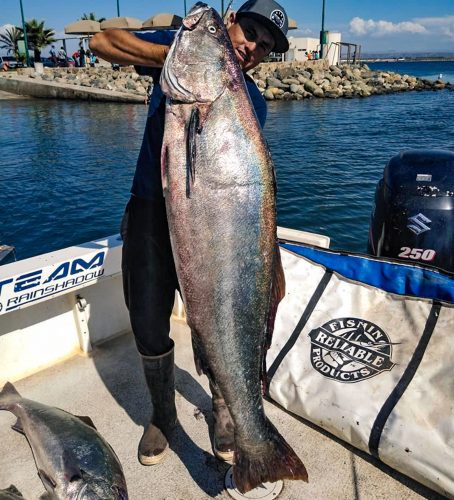
At San Quintín, the much-awaited white seabass bite finally happened — producing some huge fish mixed in with the medium-to-large catch recently. However, if a WSB is on your bucket list, get moving quickly!
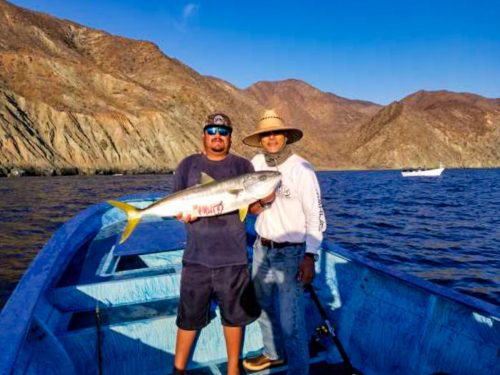
Offshore, Cedros Island is on the back half of their season. Yellows remain very aggressive in several areas around the island. Stick bait and surface iron in blue/white or mint patterns have been producing.
Live bait has been an option with lots of by-catch, and big schools of barracuda and bonito are around with the yellows. Calico bass fishing remains steady.
Fish are in 5- to 50-feet of water. Plastics and stick bait are working best. No tuna or wahoo yet. Weather is in the mid-80s and slightly humid; water temp is between 69 and 72 degrees.
Sliding down the coast, the entire Vizcaíno Peninsula Coast seems to be awakening for a spectacular fall season filled with a nice variety of fish from grouper to yellowtail along with some small halibut in the surf.
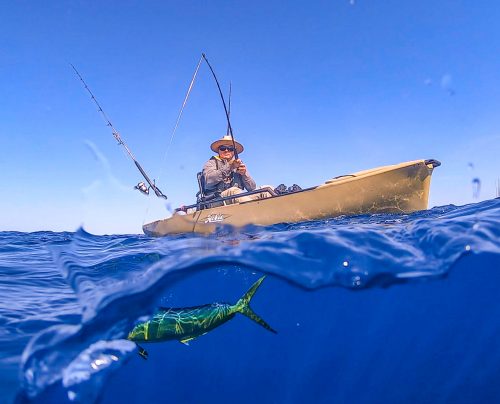
Wahoo and dorado are already offshore at Magdalena Bay, and the annual arrival of striped marlin has begun for the few local and visiting boats. Hopefully, the volume of fish will continue to grow throughout the month and on into November.
On the Sea of Cortez side, Bahía de Los Ángeles is in its usual “fry an egg on the sidewalk” mode (if they had a sidewalk). Although the fleet and a few visiting trailer boats are finding some smaller dorado, occasionally there are larger ones in the mix. Plus, the go-to pargo, grouper, and cabrilla that are normal this time of year are there also.
Locals and visitors at Gonzaga Bay advised trolling xrap-15/20/30 kind of’ far back behind the boat, in 15 feet+, parallel to shore on the incoming tide. Watch for “birdnadoes” in the early afternoon off the cliffs at the NE part of the bay, usually cued by rising winds, but worth the wrestle for dipstick iron fishing. Throw lucky crafts or swimbait in rocky surf (like calico fishing), but be ready to pull HARD and carry or pre-rig light wire leaders.
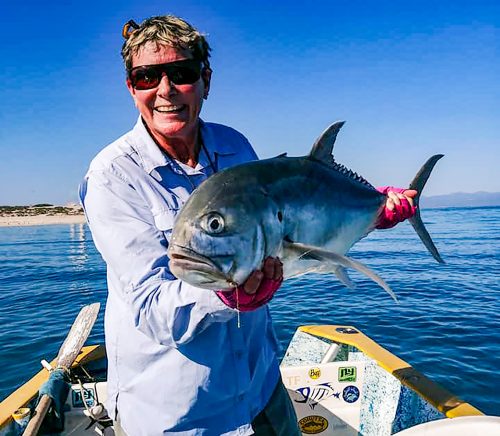
At Loreto, “Lorena” is the latest storm to swish by in the middle of the night. It left lots of standing water and some wind damage before heading for Mexico’s mainland. Fishing resumed with a decent bite on cabrilla. The water around Coronado Island is the hotspot most boats are working.
Trolling has been producing hookups on toro and some double-sized bonito. A few boats are targeting roosterfish which are bunching and munching the sardina bait schools on the west and north sides of Carmen Island.
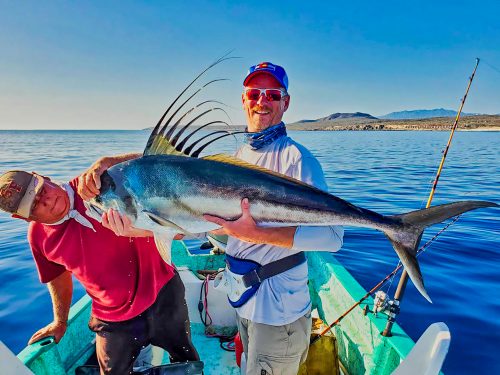
At Muertos Bay, where dorado, roosterfish and even ladyfish are common, billfish dominated the catch for a few days — not just stripers, but also a few monster blues showed up, underscoring that La Paz and Muertos still have some life in their season.
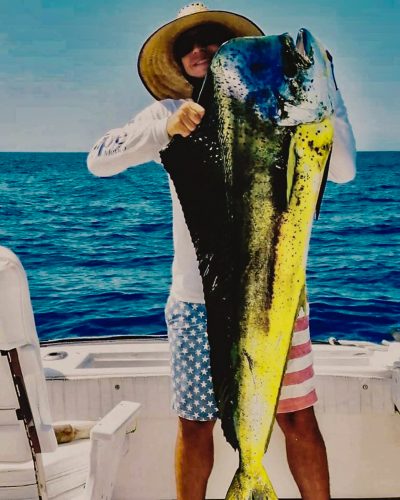
At East Cape, a yellowfin tuna bite of up to 35-pound fish has been consistent, mostly off Rincon and the lighthouse — two to three miles offshore. Live sardina and chunked squid bait were the hot ticket.
Striped marlin, sailfish, and black marlin are all part of the mix using slow-trolled ballyhoo, darker lures, and live caballito, plus, there have been some wahoo to 55-pounds around the lighthouse and the white cliffs off Vinorama. CD-18 Rapalas seems to be the best bet for the wahoo. Inshore, the drop-offs have been producing Almaco jacks, dogtooth snapper, pompano, and some nice grouper.
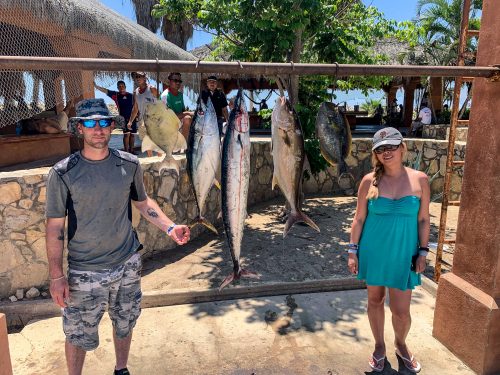
Puerto Los Cabos seems to be in a transition with occasional yellowfin to 70-pounds, along with dorado. However, most are in the release category because of size. An occasional wahoo plus a few trip-savers: Almaco jacks, cabrilla, snapper, pompano, bonito, surgeonfish and of course, triggerfish are a good bet. Expectations for October are that the usual larger tuna bonanza and more billfish will show.
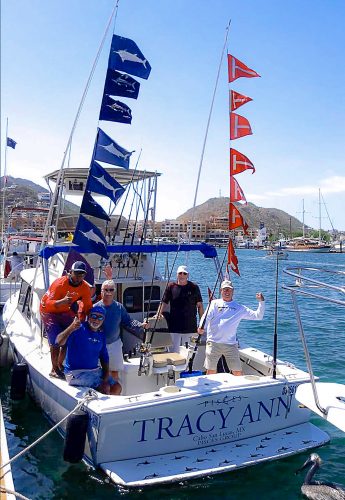
Meanwhile, the Cabo San Lucas striper bite has been off the charts with some fleets reporting triple-digit releases, an occasional cow-sized yellowfin tuna from under the feeding porpoise, and some dorado and a few wahoo to boost expectations for visiting anglers.
Gary Graham, That Baja Guy
thatbajaguy@gmail.com
Questions and comments are always welcome.
With more than five decades of fishing experience – from light tackle and fly to offshore billfish – Gary Graham has experienced all aspects of fishing in the Southern California and Baja waters. His observations of species behavior, tackle and techniques are always from his unique perspective, earning him the respect of his peers as well as anglers who eagerly follow his Baja reports and features.
Gary maintained a home at East Cape in Baja Sur for more than 18 years and still spends nearly half of each year exploring the entire peninsula in his self-contained Roadtrek van. He observes everything Baja, from the mysteries of a tide pool on a deserted Baja beach filled with tiny sea creatures to the largest billfish in the sea.

